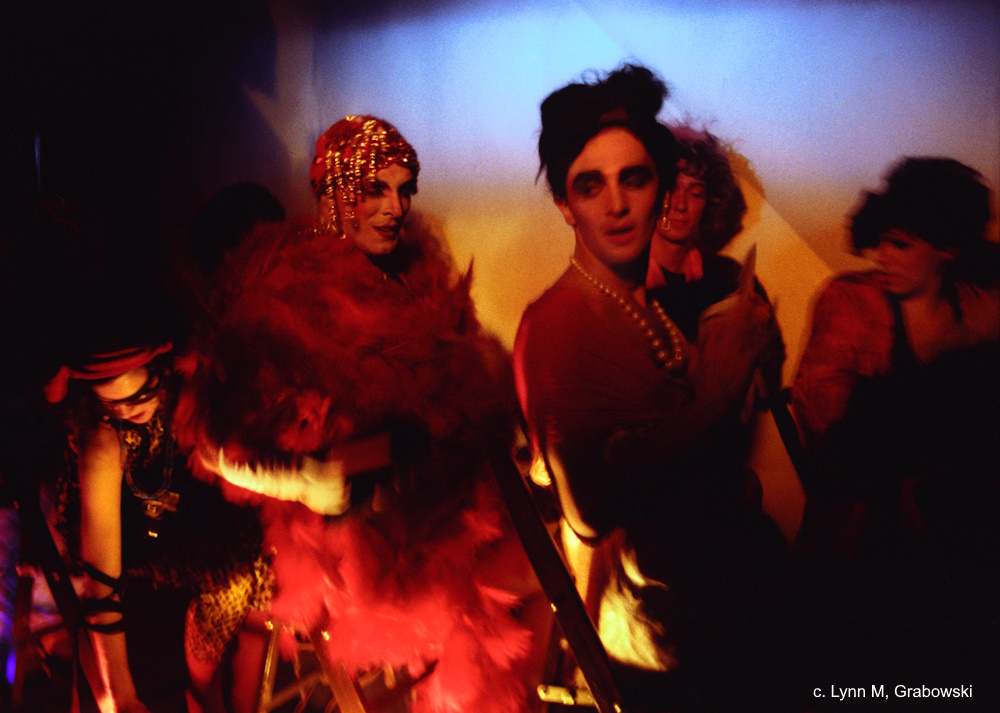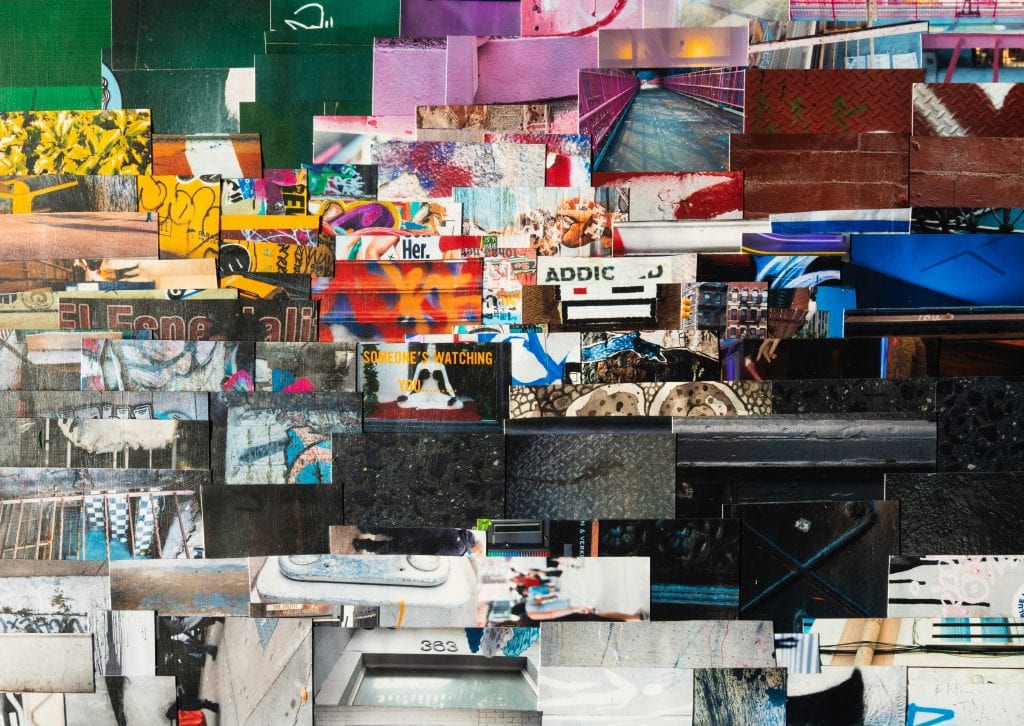Click Here to view the catalog for Linus Coraggio’s Ramifications.
When the street art phenom broke big in the early- 80s, art worldlings got a grip soon enough and Keith Haring, Kenny Scharf, and Jean-Michel Basquiat became the anointed ones. But in 2017, Richard Hambleton, the creator of that street presence, Shadowman, OD’d. And blew up. That, and last year’s strong Rammellzee retrospective, made it clear that the narrative of street art is in melt. So it’s good timing for a show of Linus Coraggio, who brought sculpture to the streets with 3-D graffiti and has spent nearly four decades making a remarkable—and remarkably diverse—body of work.
Linus—it’s always just Linus—grew up in Cobble Hill, Brooklyn, his father a musician, his mother a writer, who bought him lino-cutting tools when he was seven. He has meticulous memories of making his first sculpture aged 9, a pyramid glued together from 20,000 toothpicks. A decade later he was at Purchase, the State University of New York, and settled on an art-making future but quickly dropped the idea of looking for a gallery. “My teachers would say things like ‘one in 3000 of you might make it as artist,’” he says. “They were so dismal that I started to look for other ways to get my work out.”
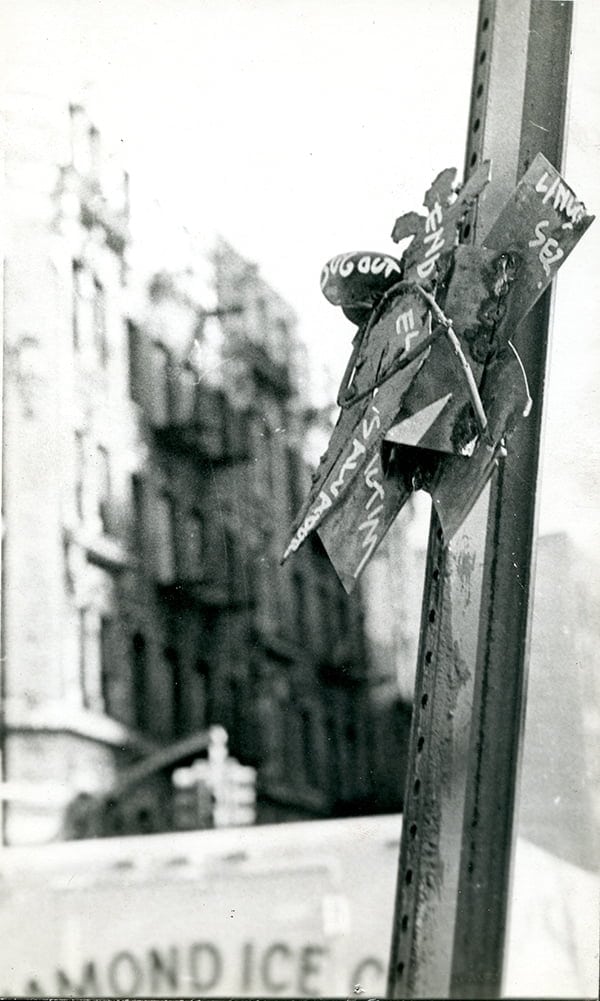
Linus had friends making graffiti, and accompanied them from time to time, so after he graduated in ’84 and moved to the city, his plan was to wheat-paste abstractions d Downtown. The crew he approached though were looking for a gallery show, not a newbie. “That got me thinking what kind of street art can I do on my own?” he says. “I was already doing metalwork. So one night I was having trouble going to sleep and I flashed on these No Parking signs I climbed as a kid. You could jam your feet into them. And I started welding the next day.”
Installing a street sculpture is more time -consuming than work with a spray can. “I had a Volkswagen bug,” Linus says. “So I drove around the East Village and SoHo putting them up. I had been hanging around the Life Café so put up a few round there. And by the Hell’s Angels on Third Street.” Installation, being more time -consuming, it’s also that much riskier. Which can help. “The edginess in the art comes from the roughness of the way I put it together and the chances you have to take to put it up,” Linus says. “And that energy creates a tension as an artist that goes into your work…the rough edges and the gestures…and that stays with you when you do your studio work.”
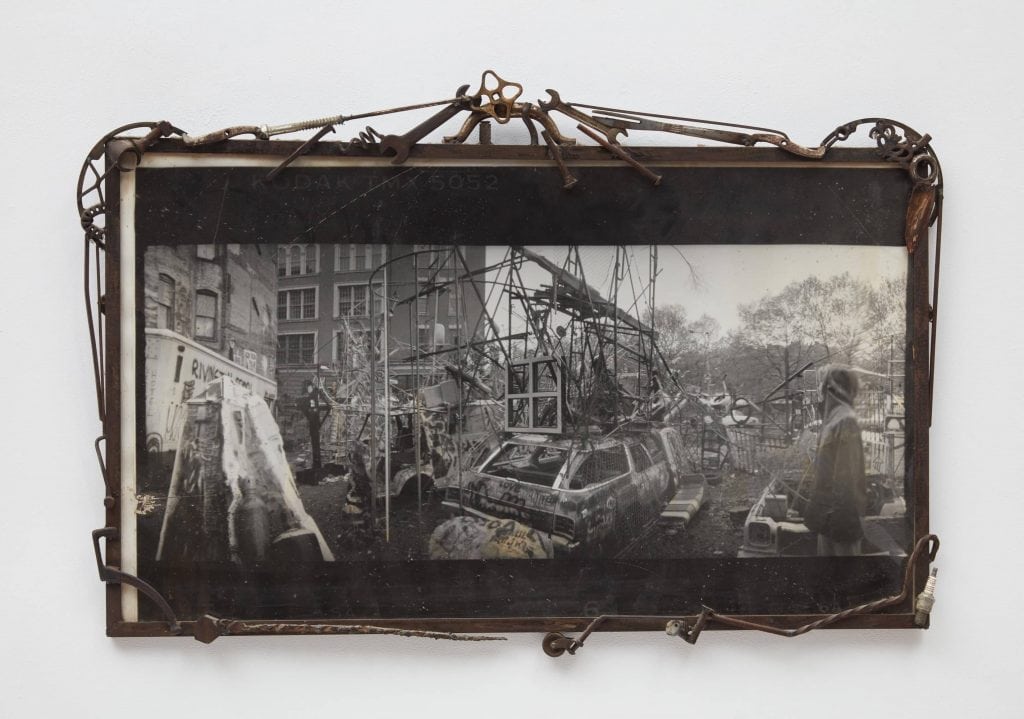
Linus had been the first to make 3-D graffiti but soon others were at it too. Were they competitive? Well, it was the streets. He spotted a piece by a rival in Tompkins Square Park while drinking a beer at 5 o’clock one afternoon. “So I climbed up and crushed the beer can onto one of the sculptures,” he says. Later though he hung his competitor in a street art show he curated. “So I guess we buried the hatchet.”
He followed up the sign welding with more complex assemblages, some including figurative elements and text. You could say the toothpick pyramid was a precursor because multiplicity is key, and the signature style of Linus has become an inventive array of signatures. One piece will pack the raw minimal punch of scrap metal, but alongside there’ll be a motorbike piece, an unnerving Barbie- doll assemblage, and a piece bristling with knives and/or gunnery. “Minimalism is too quick. And too planned,” he says. “There’s a subconscious level to what ends up getting finished, based on the material I’m thinking of using.”
The coming of the Internet largely transformed the world of street art, which has become a world-wide phenomenon, intimately—too intimately often—involved with promotion and sponsorship. Street sculpture has been largely immune from this. “The great graffiti artists, like Futura, their work was easy to photograph,” Linus says. “But a piece of 3-D street art on a No Parking sign, perched on the edge of a sidewalk, with cars and trucks passing near it, a building 25 feet away, and patches of sky with sunlight, that’s difficult to document with a strong picture.”
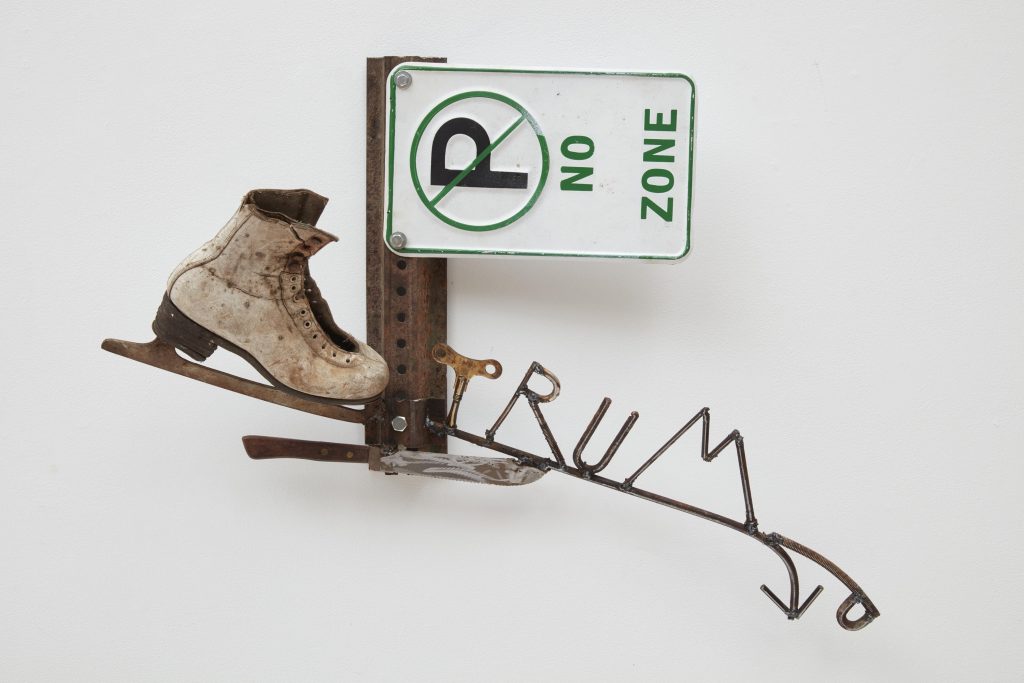
It’s a position Linus accepts, rather than embracing. “I always saw myself as the underground in the underground,” he says. “Like I was subverting the art that was supposed to be subverting the level above it.” It’s a thoroughly ornery attitude, a good attitude for an artist, and one that suits his uncompromising art.


